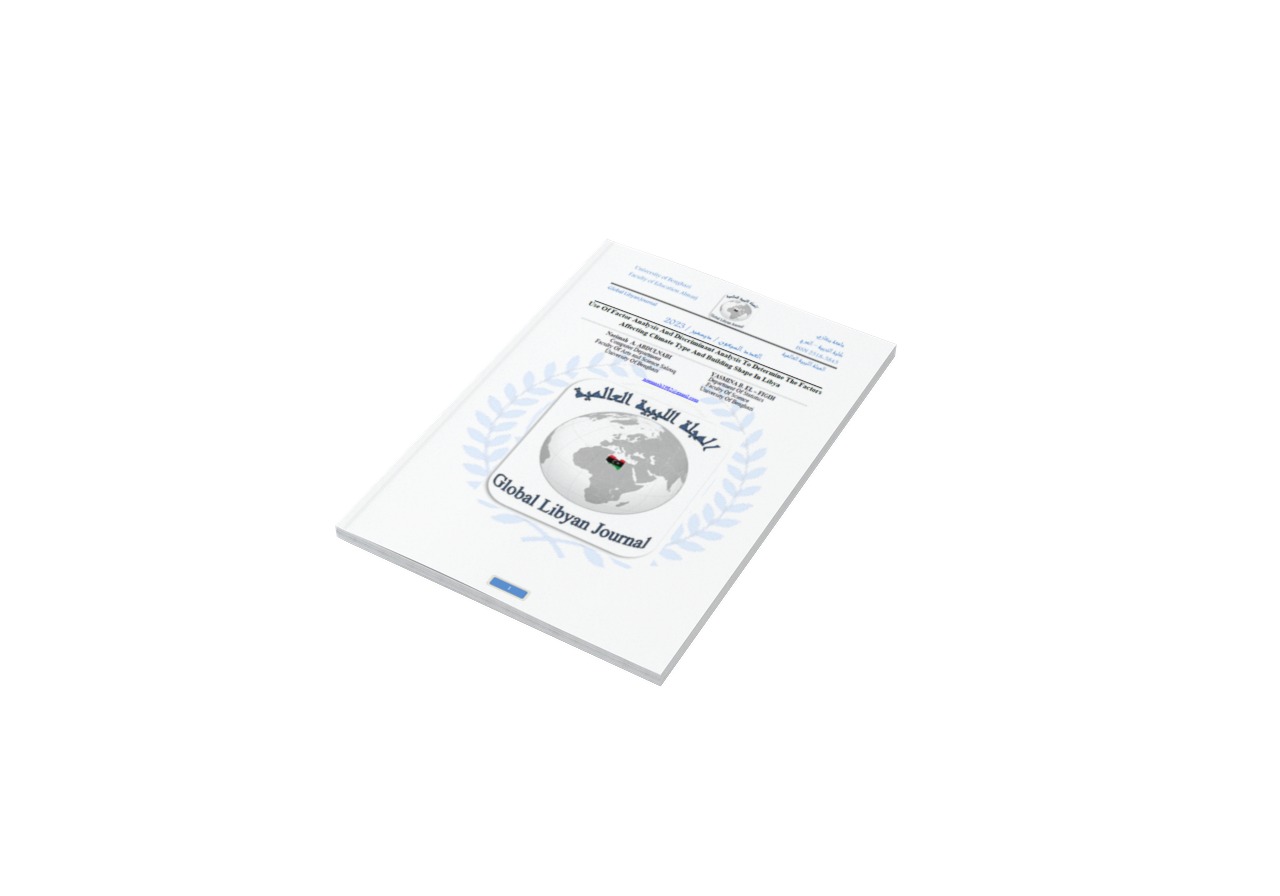Use Of Factor Analysis And Discriminant Analysis To Determine The Factors Affecting Climate Type And Building Shape In Libya
DOI:
https://doi.org/10.37376/glj.vi70.4570Keywords:
Discriminate Analysis, Classification, Climate, Factor AnalysisAbstract
Climate in simple concept commonly known as the rate of the weather , there are many observed elements of the atmosphere that are subject to constant change. These elements generally are: Maximum temperature(X1), Minimum temperature (X2), Relative humidity(X3), Wind speed(X4), Wind direction(X5), Duration of sun shine(X6), Clouds amount(X7) and Rainfall amount(X8).The main objectives of the study are: (i) To define the factors influencing the Climate, and to determine the most important factors of the climatic variables.(ii) To discriminate the Climate by region and define the factors which responsible for that discrimination. (iii) To determine the factors that influencing in the building form.
To achieve these goals, a simple random sample of ten cities were selected from the Libyan Meteorological Department in Tripoli. These cities are divided into (6) cities as a coastal climate and (4) cities as a desert climate. The data of this study were collected as a series from each city from January of the first year 1970 to December of the last year 2000. Each series consists of 12×30×30×10 monthly observations, and the total data points in the study will be (108,000) from Derna, Benghazi, Jalu, Agedabia, Tripoli, Misurata, Sebha, EL-Kufra, Ghadames and Shahat. To study the variability of climate system of these places needs to explain the observed correlations between the elements and the regions.
Two different statistical techniques are used in this study to analyze the data to study the first objective, factor analysis is used to determine the importance of the variables and their effect on the climate in both coastal and desert climate in general, and for each city separately. To study the second and third objectives discriminant analysis is used. This study provides a number of variables with significant positive effect on the Type of Climate variable(X9), in the coastal cities, (Derna, Benghazi, Agedabia, Tripoli, Misurata, Shahat) Maximum Temperature(X1), Duration Of Sun Shine(X6),Clouds Amount(X7) and Rainfall Amount (X8) are good representative for all eight original variables. But in the desert cities (Sebha, Jalu, EL-Kufra, Ghadames) the variables Maximum temperature(X1), Minimum temperature(X2), Relative humidity(X3), Wind speed(X4), Duration of sun shine(X6), Clouds amount(X7) and Rainfall amount(X8) all these variables have significant positive effect on the Type of Climate variable(X9).
The results from discriminant and classification analysis for the dependent variable Type of Climate (X9) show that: There is significant difference between the climate of ten regions. Where, Maximum Temperature(X1), Relative humidity(X3), Duration of Sun Shine(X6), Clouds Amount(X7) and Rainfall Amount(X8) are significant and important, and the Relative humidity(X3) have high correlation with the discriminant function. The results from discriminant and classification analysis for the dependent variable Type of Building(X10) show that: There is significant difference between the building form of the ten regions. Where, Maximum Temperature(X1),Relative humidity(X3), Duration of Sun Shine(X6) and Clouds Amount(X7) have high correlation with the discriminant function or these variables are important and significant and have an effect on the building form in each city.
Downloads

Downloads
Published
How to Cite
Issue
Section
License
Copyright (c) 2024 Global Libyan journal

This work is licensed under a Creative Commons Attribution-NonCommercial-NoDerivatives 4.0 International License.




